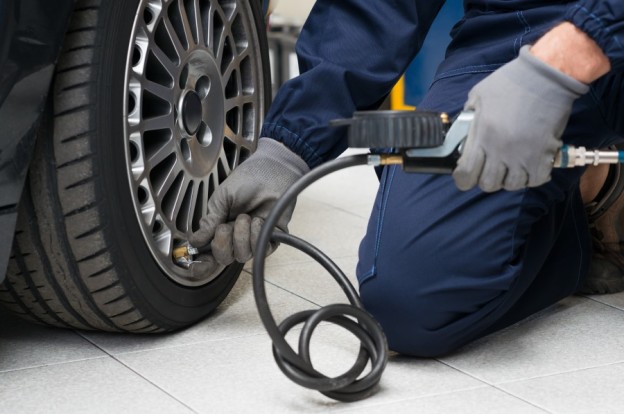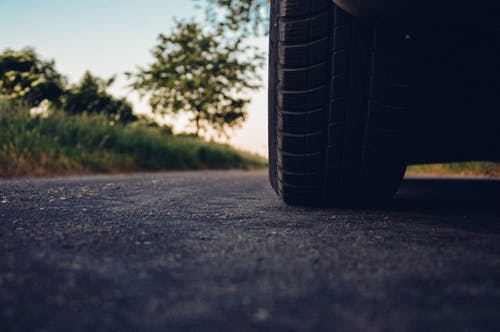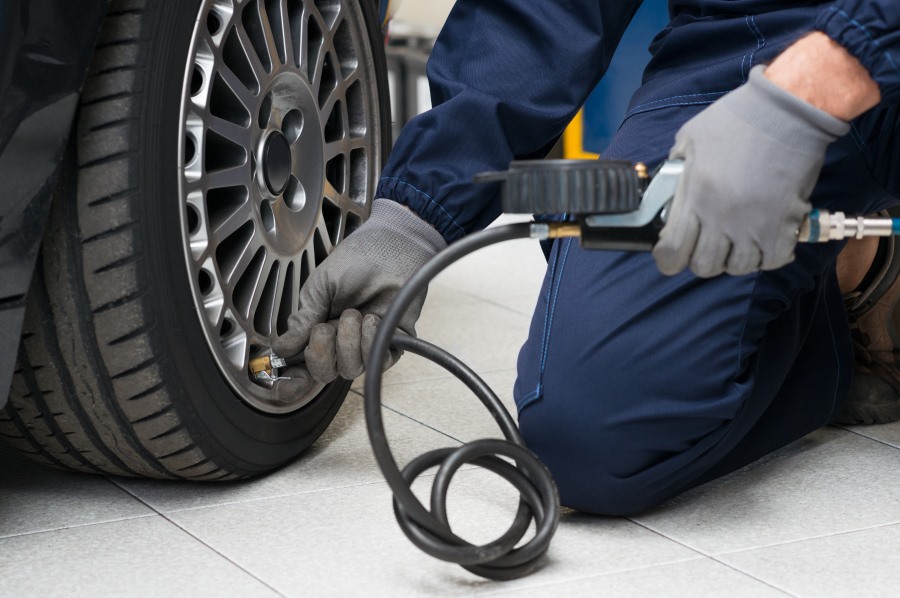
How Important Is It to Maintain Your Vehicle Tyres
Never forget the fact that tyres are the single point of contact between the road and your vehicle. That’s why it’s so vital to uphold the quality and performance of your tyres to make sure both your safety and your mobility. To achieve this, we recommend that you stick to the following tips.
The Right Tyre Pressure
The right tyre pressure lowers the risk of losing the vehicle’s control. Moreover, it shields your tyres from untimely wear and permanent damage to the internal structure. Tyre’s pressure can fall due to small holes, the natural escape of air through the tyre’s parts, or even from a decline in ambient temperatures.

Inspect your vehicle’s tyre pressure including the spare wheel on a monthly basis and prior to embarking on any long journey. These checks must be carried on ideally when your tyres are cold (that means it must not have run for at least two hours or must have run for less than three kilometres at low speed). However, if they’re not checked in this cold condition, add 4 to 5 PSI to the suggested pressure but never deflate a hot tyre. It’s vital to inspect your car’s tyre pressure at least once a month.
- The right tyre pressure can save fuel.
- Over or under-inflated tyres can lower tyre’s life, impact their performance and increase the threat of damage.
- You can find recommended tyre pressure on your vehicle’s user manual or on the inside of the fuel flap or on the vehicle’s door’s label or on door’s frame.
Wheel Alignment
It’s not easy to tell if your wheels and axles are appropriately aligned while driving. However, if your vehicle’s suspension geometry is inaccurate, then its handling may get changed and your safety would be put into jeopardy.
If your vehicle’s tyre has come into contact with a hard object, like a kerb or pothole, or you have detected uneven wear on your tyres, then right away get in touch with a tyre specialist to have it systematically checked. It’s vital to make sure the wheel alignment of your car is right too:
- Shield your tyres from uneven and/ or speedy wear.
- Save fuel consumption.
- Get the best road handling.
Wheel Balancing
Wheel balancing aids shield early tyre wear and get rid of vibration. It also shields the steering system, suspension and vehicle’s bearings. When you replace a vehicle tyre, it’s vital to get your vehicle’s wheels balanced, as a balance weight is either moved or removed, or you may have to replace other tyres of your vehicle with brand new. A wheel gets out of balance when one area is lighter or heavier than the rest, which will cause the following:
- Vibration
- More pressure on front-end parts
- Front-end parts to wear early
- Rough and speedy tread wea
Tyre valves and valve caps shield your vehicle’s tyres and you. Valves and their parts are typically made of rubber, so they are subject to wear and tear eventually. When you buy new tyres, tyre valves are an economical way to shield your vehicle tyres, vehicle and yourself. The valve cap is also vital, as it’s the main air seal that aids to keep out dirt and dust particles. Thus, you should inspect your vehicle’s tyre valves and valve caps and see that they are in excellent condition always:
- Preserve the right tyre pressure.
- Maintain an airtight seal.
- Make certain longer tyre life.
Rear Tyres
Fit new vehicle tyres to the rear axle to get complete control. Well, rear wheels aren’t connected to your steering wheel, which makes it tougher to judge their grip while driving. New tyres or the least worn tyres are fixed to the rear wheels to gain:
- Better road grip, especially in tougher situations whether your car is front or rear wheel drive.
- Better control in tight corners when the roads tend to be slippery or during emergency braking.
- Lower risk of losing your vehicle’s control, particularly on wet surfaces.
Tyre Repairs
When a tyre requires repairs, an expert removes the tyre from the wheel and inspects it from within. This is mandatory because internal damage can’t be seen while the tyre is connected to the wheel. A tyre expert will:
- Check tyre’s internal condition, noticing any damage not found on the surface.
- Make sure the tyre is appropriately refitted, maximising handling and comfort.
- Ascertain compliance with the vehicle manufacturer’s recommended pressures.
- Take note of the instructions and warnings on the tyre sidewalls (rotation or assembly direction).
- Take note of the features of specific tyres (self-sealing tyres, low section height, run-flat etc).
- Make certain compliance with procedures for assembly, disassembly, balancing and inflation of the tyre and valve replacement.
- Make certain compliance with manufacturers’ and legal rules in accordance with tyre selection, load capacity rating, structure, size and speed code.
Tyre Maintenance Tips
Along with regular tyre inspections and maintenance, vehicle owners or drivers must:
- Adhere to vehicle manufacturer’s recommendation for tyre replacement.
- Have an expert inspect your vehicle tyres that have been in use for 5 years or more at least once a year.
- Change tyres that are still in service for 10 years or more from manufacture date with brand new tyres. It’s imperative to replace them even if they look serviceable and even if they haven’t reached the lawful wear limit.
Your wheels and tyres are very important things on your vehicle, as they are the key components that connect you and your vehicle to the road. Having the right tyres fitted on to your vehicle and the right tyre pressure in your vehicle tyres is a must for a few vital reasons:
- Incorrect tyre pressure can cause excessive tyre wear on the tyres and also make it dangerous for you when you are driving.
- Severely under-inflated tyres can cause damage to the side wall of your vehicle tyre, which would mean that your tyre would need replacing.
- Underinflated tyres can also lead to you buckling your wheels. This can happen due to the lack of protection that the tyre gives to the rim when it is under-inflated. Hitting a pothole or any imperfection in the road with an under-inflated tyre can also cause a blow out of your tyre.
Wheel alignment is a very significant thing too! Without a wheel alignment, your car can pull to one side and can also cause uneven tyre wear. It can be very dangerous to not have a good wheel alignment on your car because, without proper wheel alignment in place, it could be a lot harder to control the vehicle.
When getting new tyres fitted to your vehicle – it’s crucial to make sure directional tyres rotate in the correct way. If not, they will not grip you to the road like they are intended to, and it can also lead to aquaplaning in the wet.
If you do get a flat tyre, then it’s vital to pull over at once and change your vehicle tyre or call for assistance. If you do not pull over when you have a flat tyre and try continuing driving on the flat tyre, then it will eventually disintegrate and will only leave you and your vehicle just on the rim.
If you need more information or second-hand car parts, then call us at FordPro Wreckers on 02 9757 1811 or visit us!

















